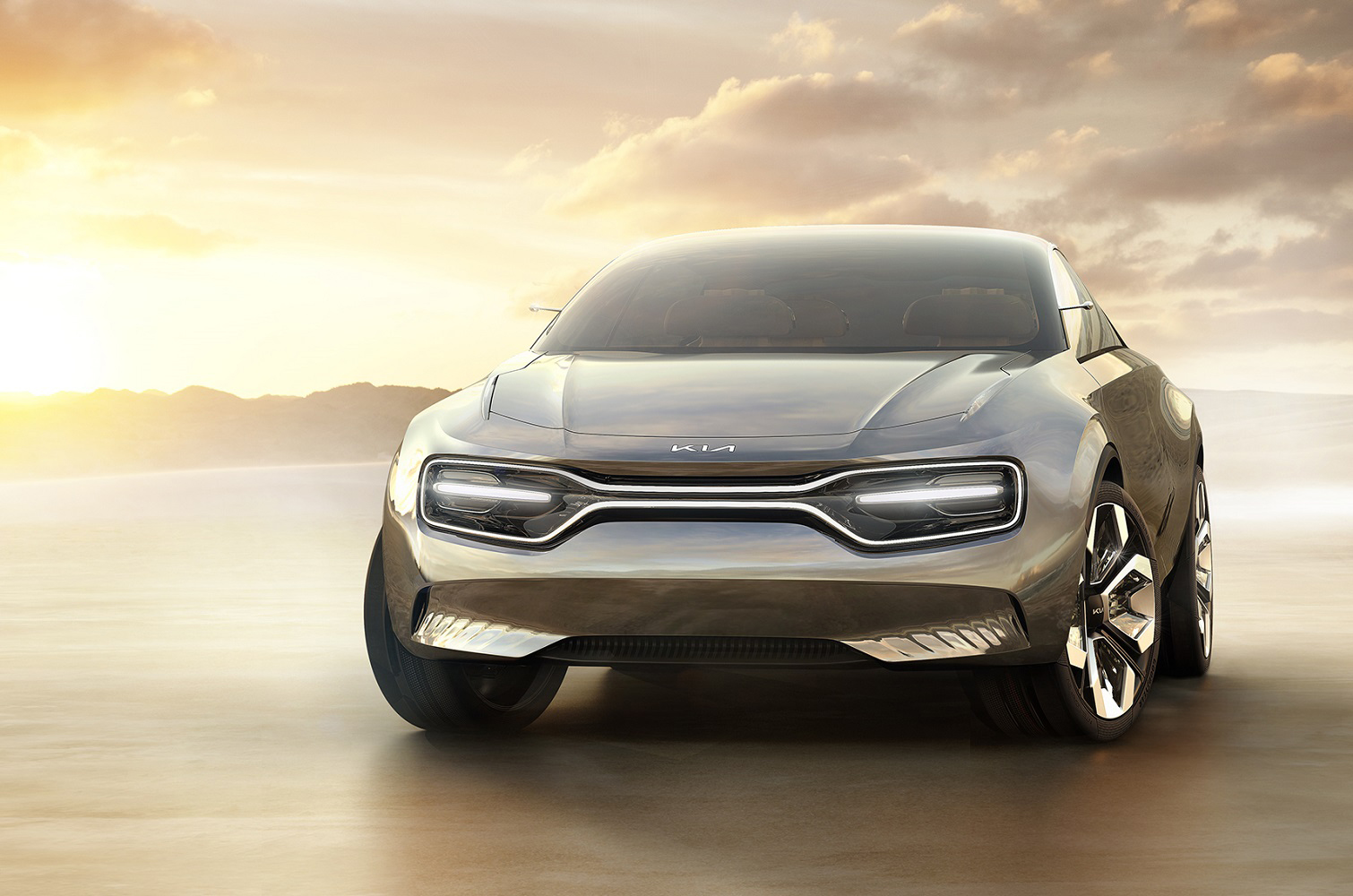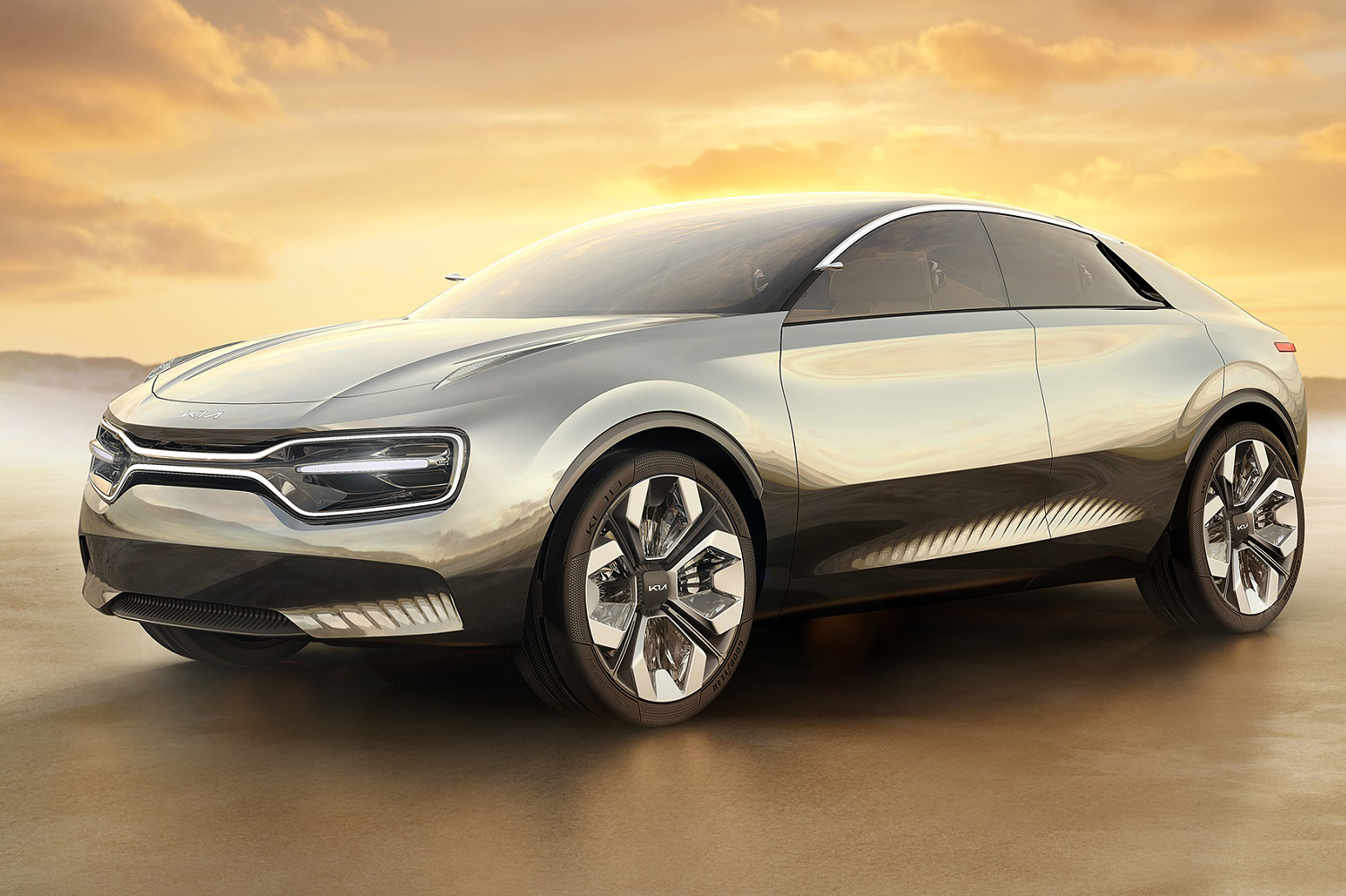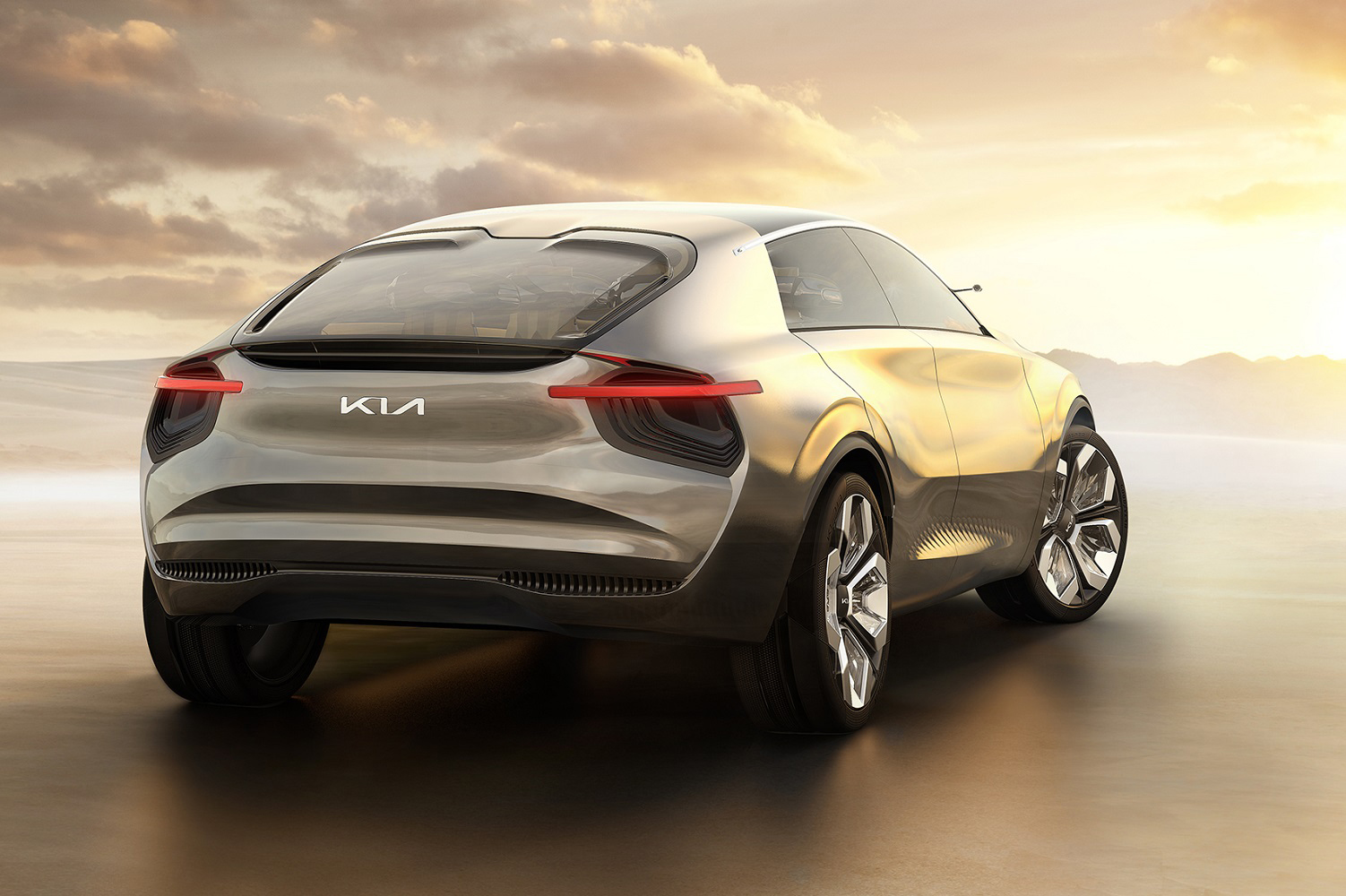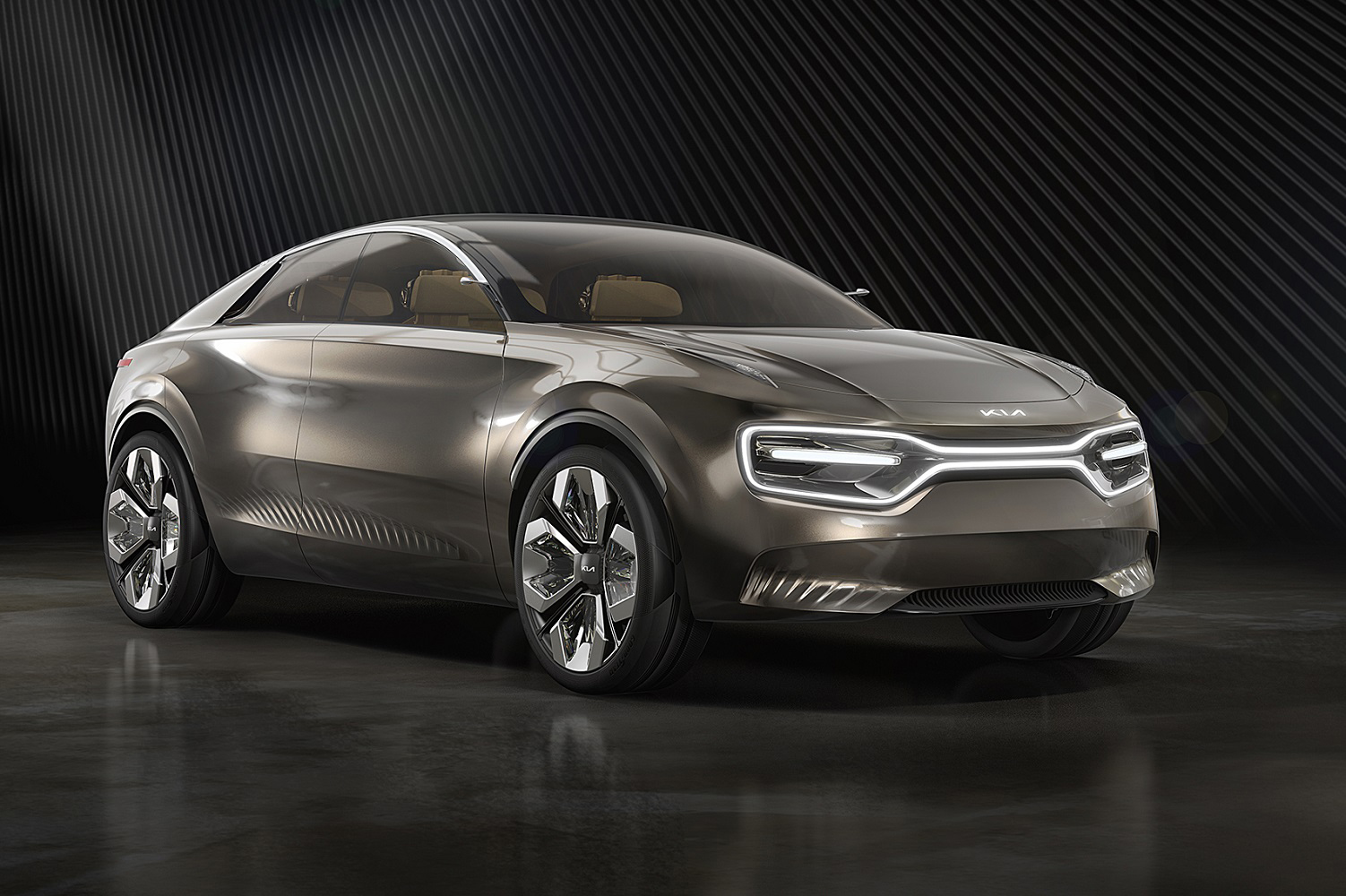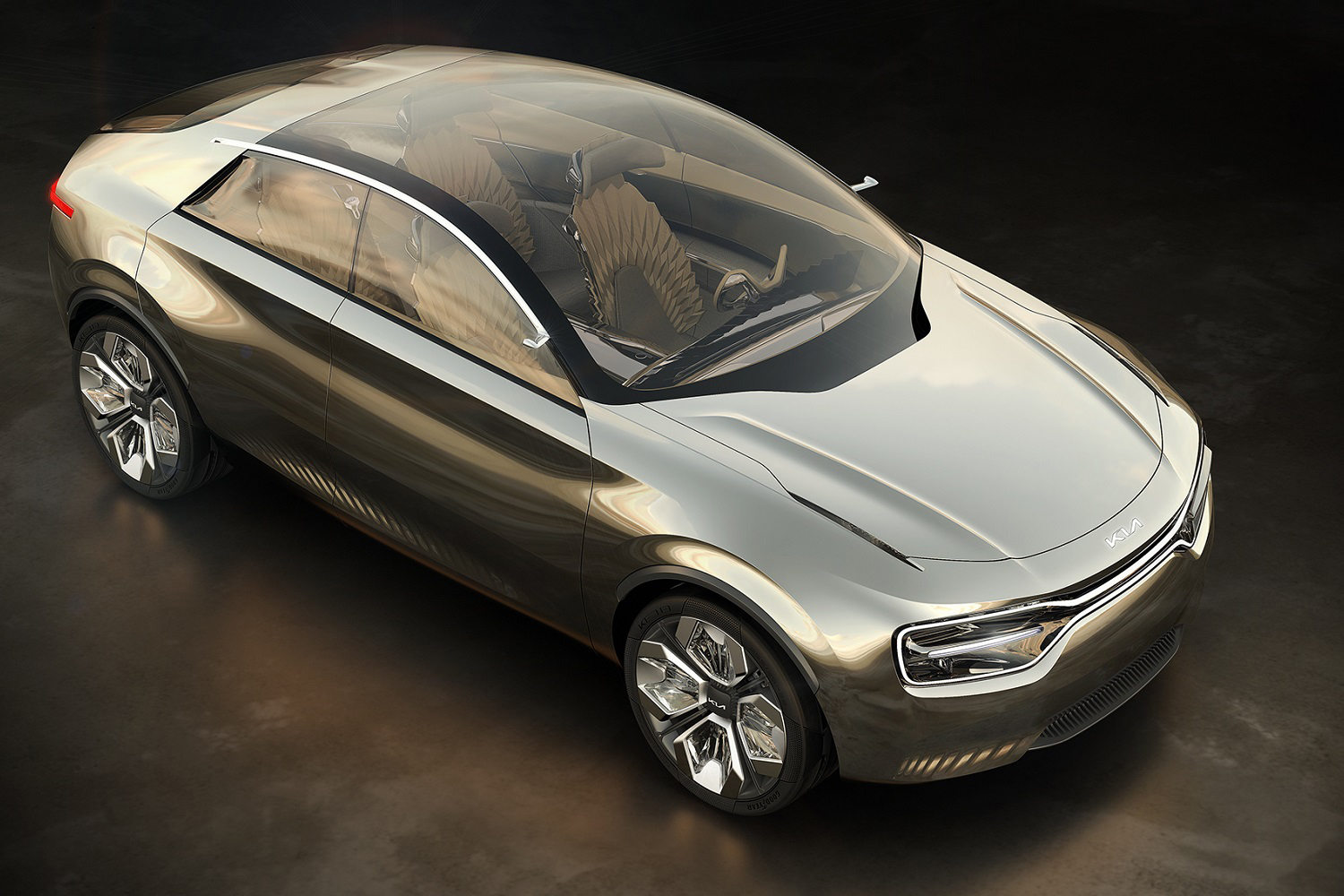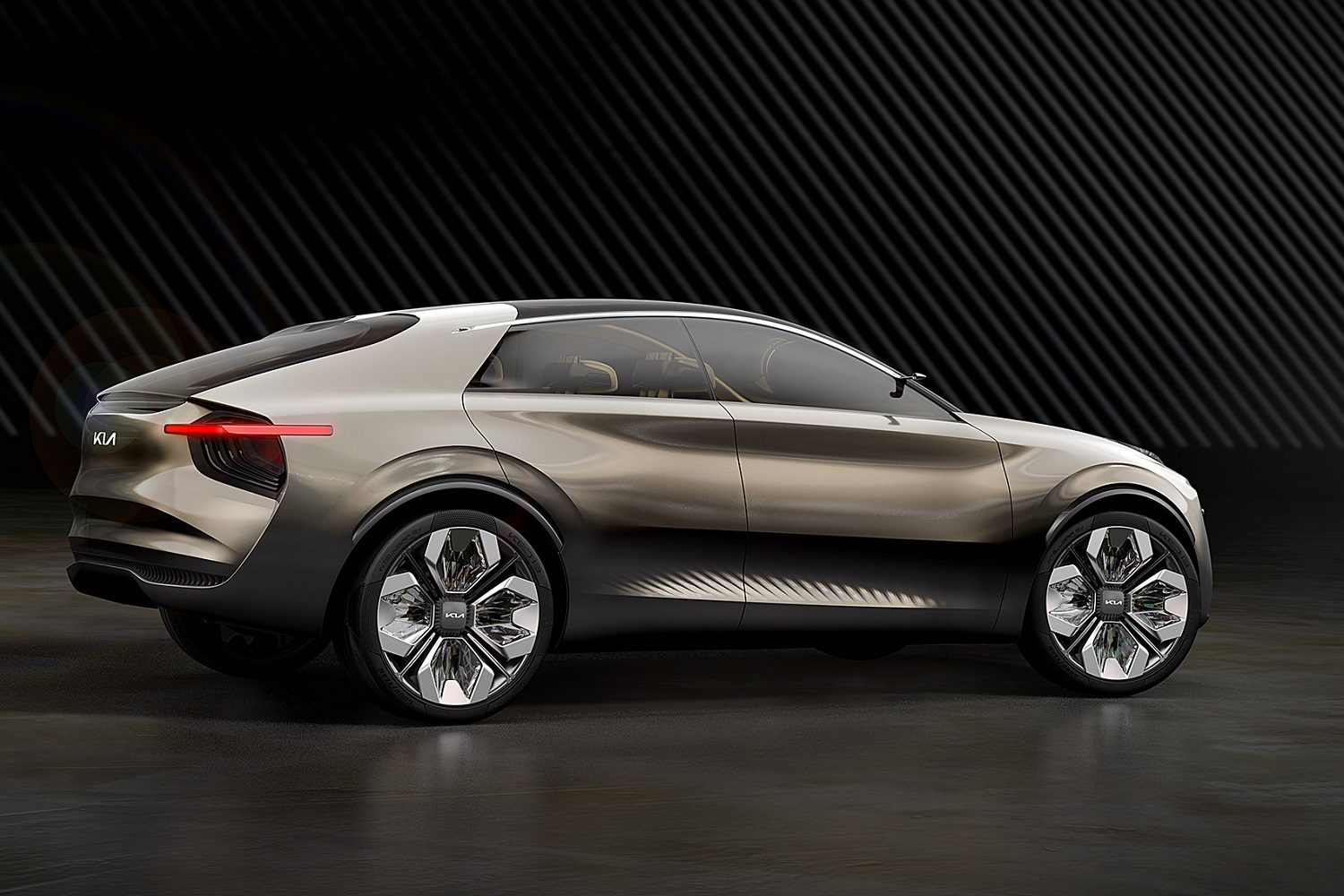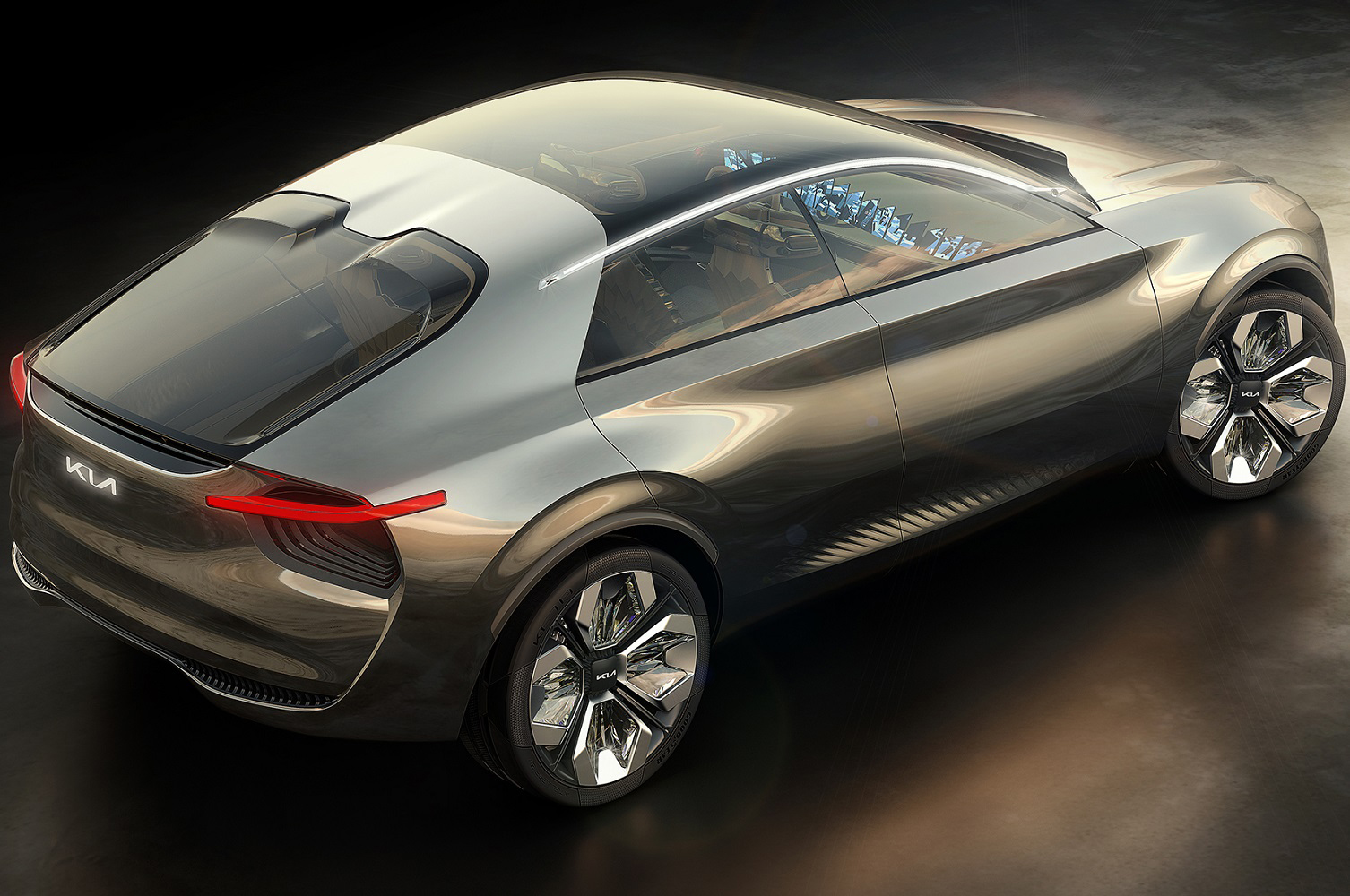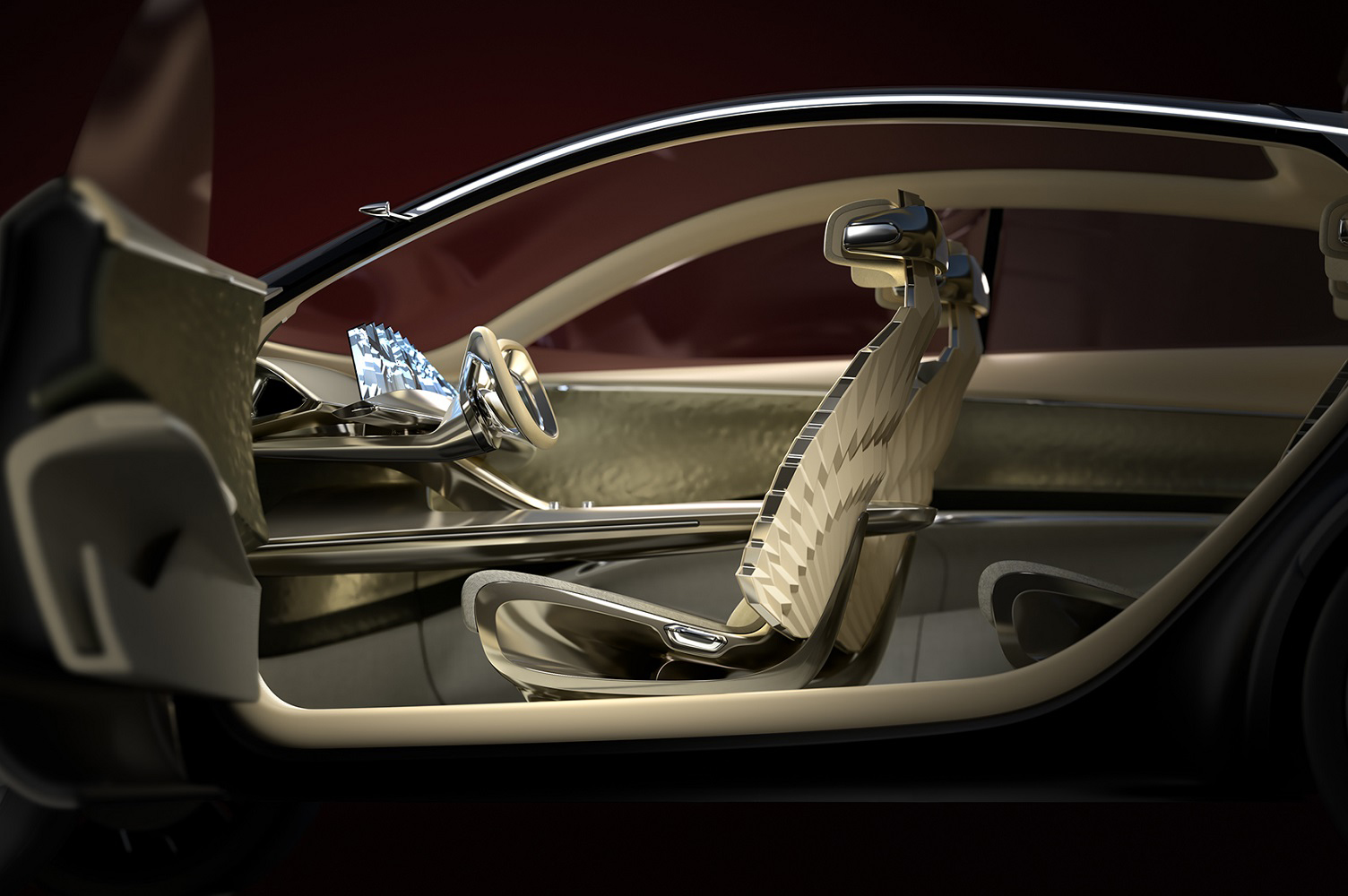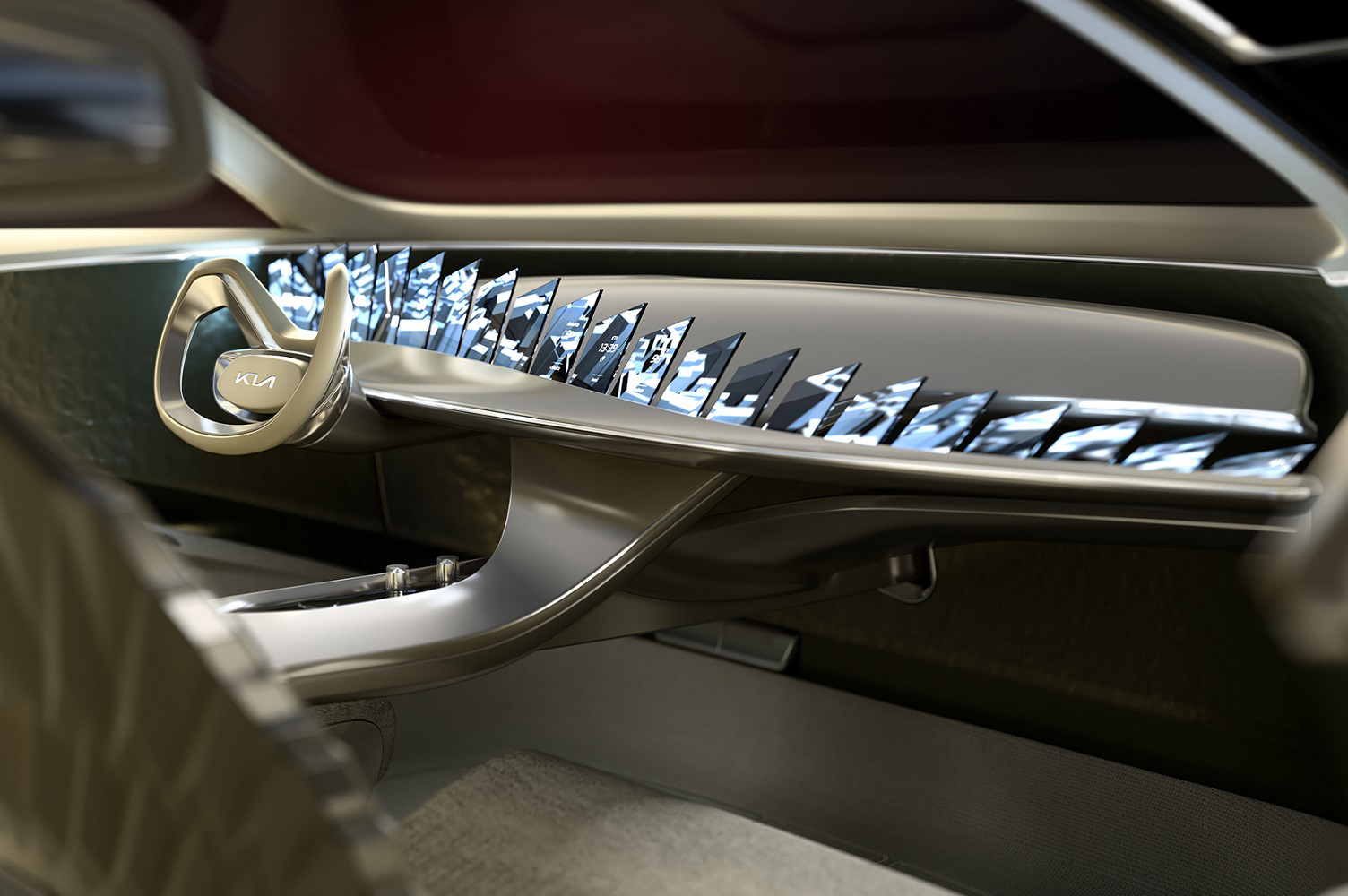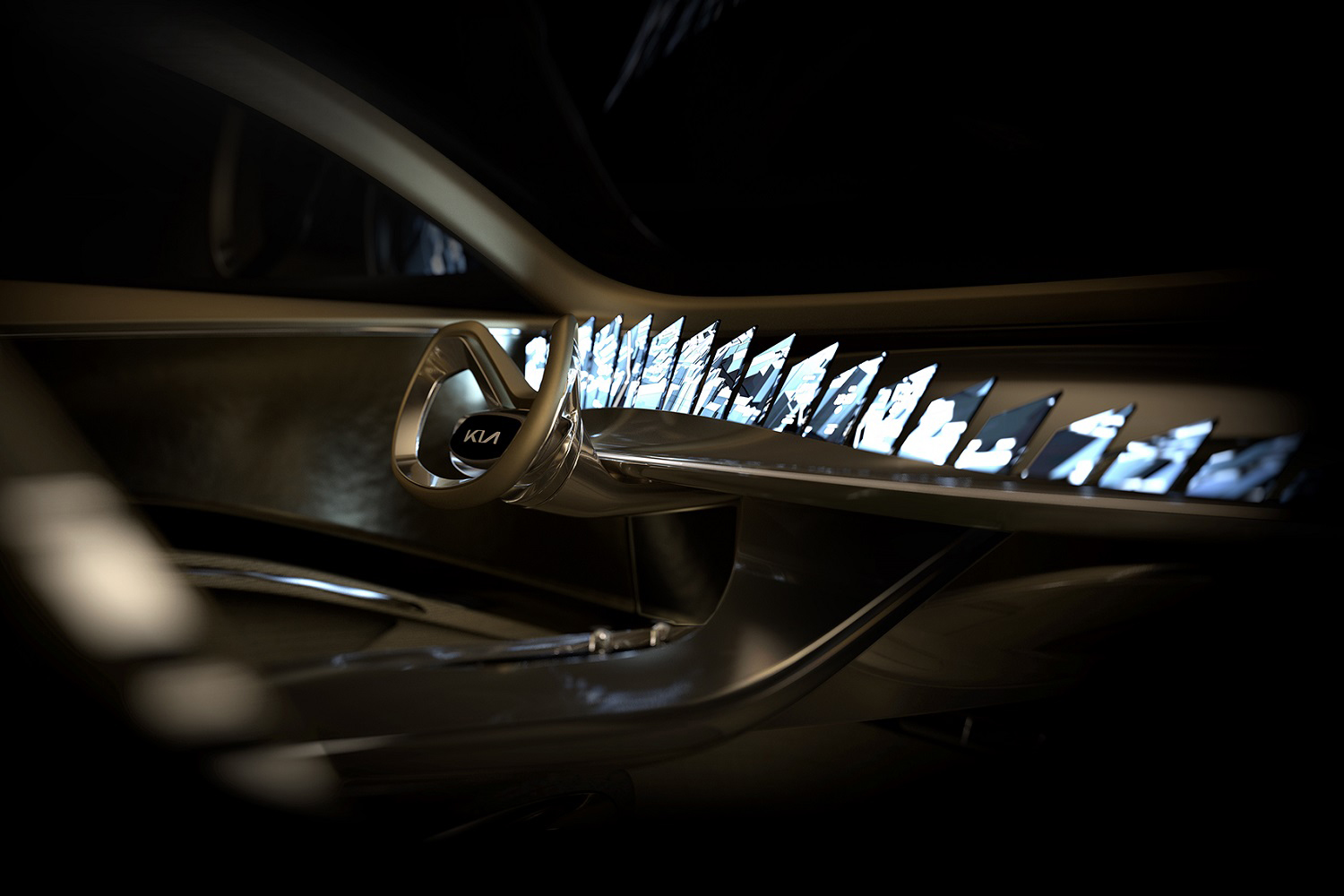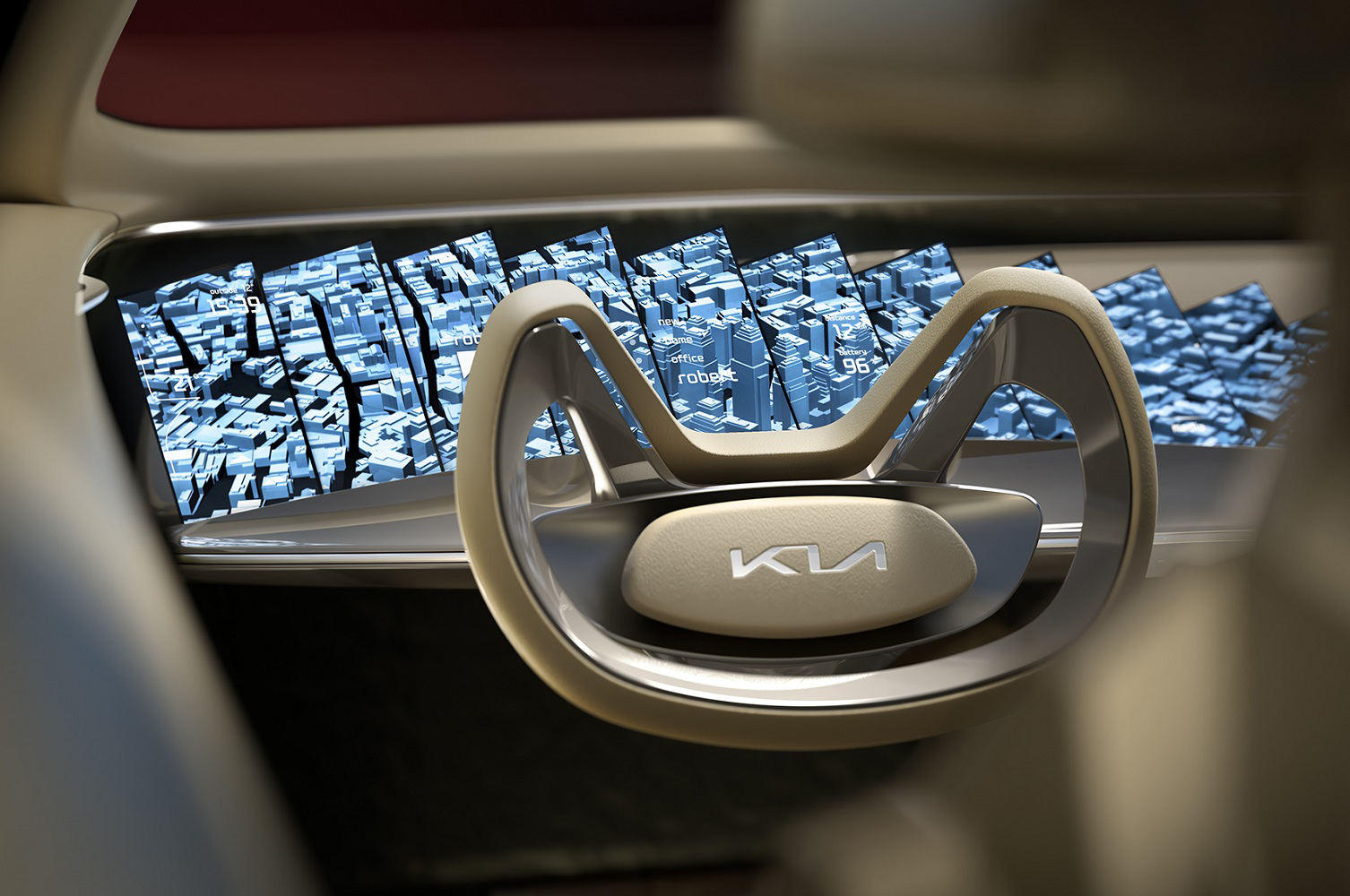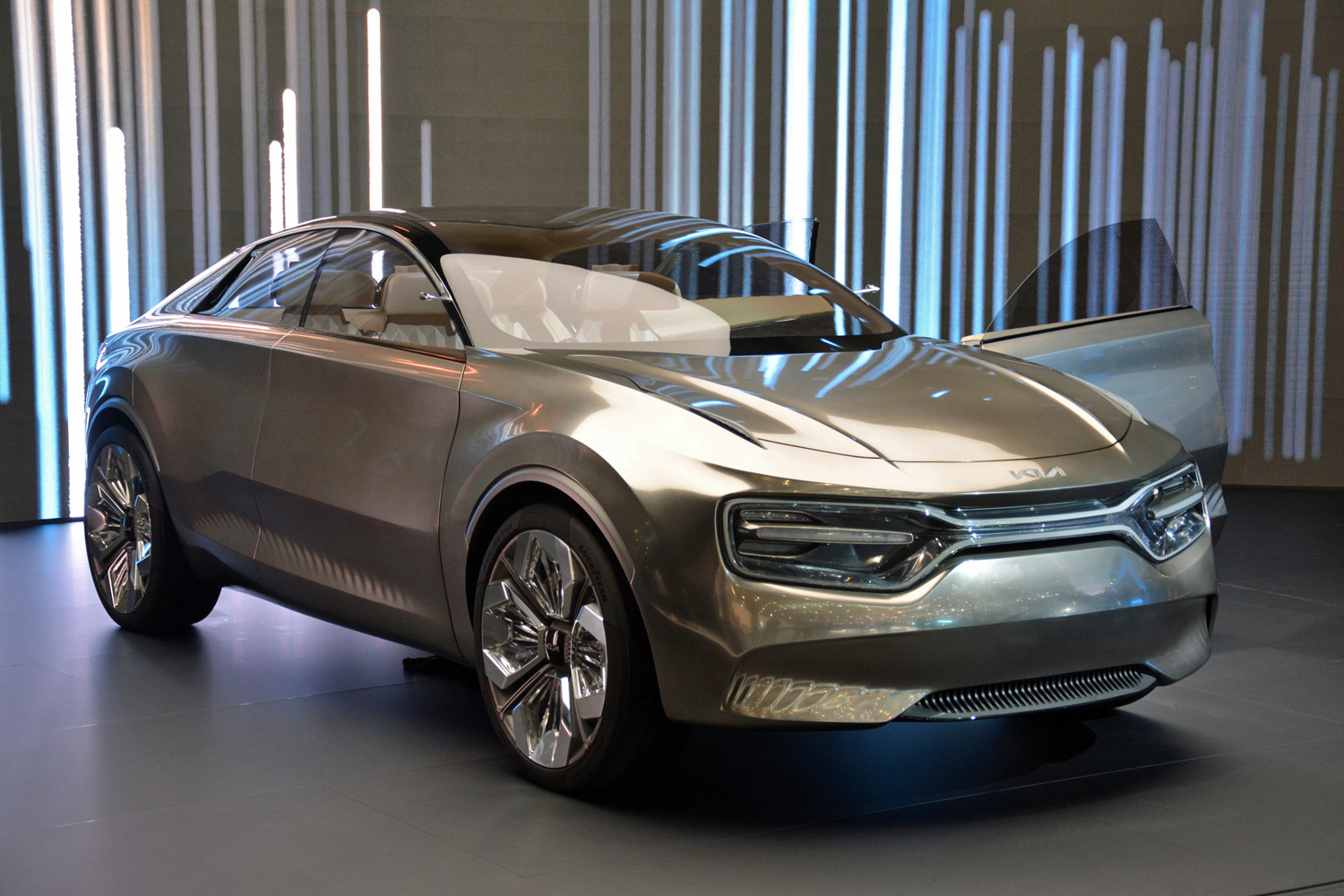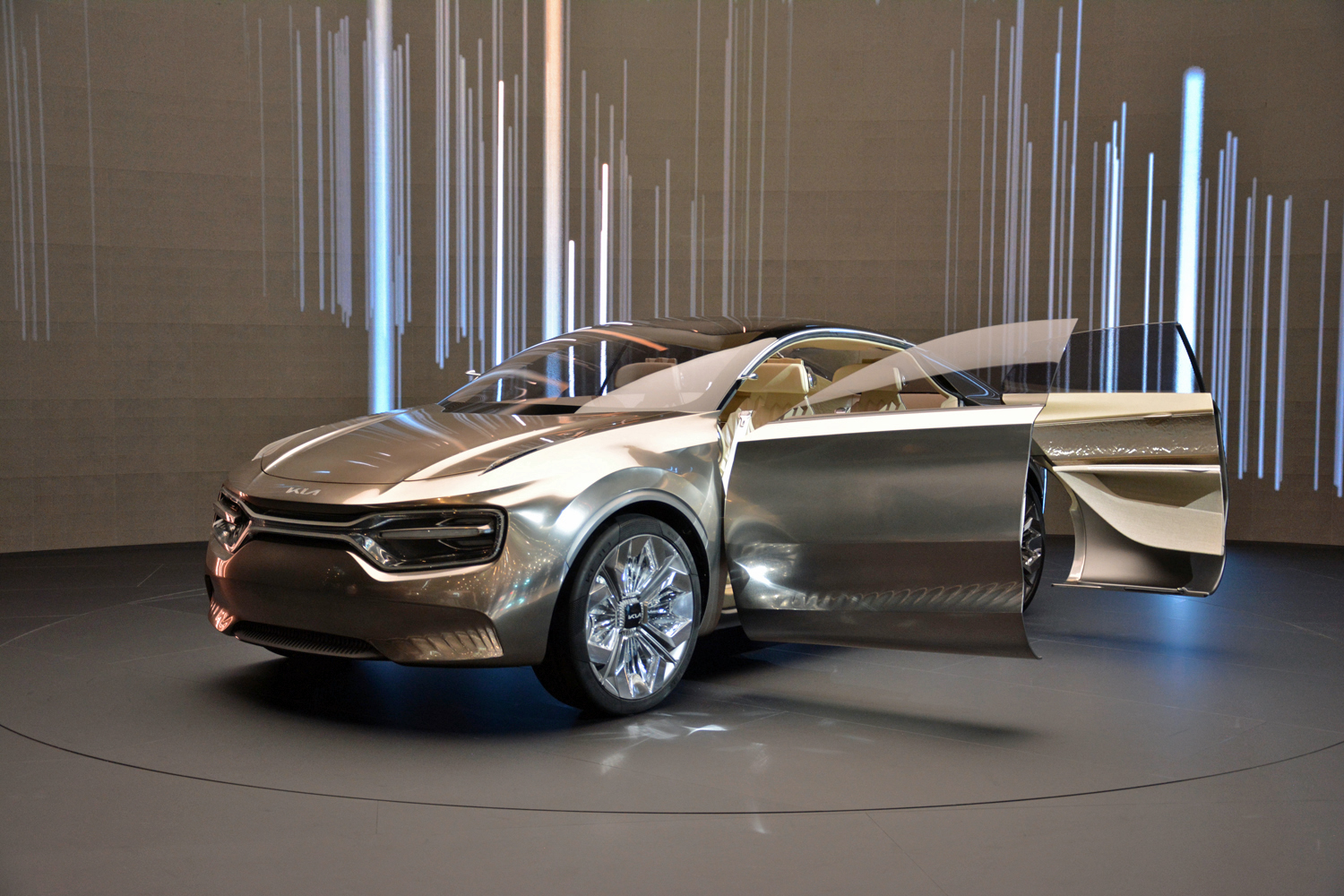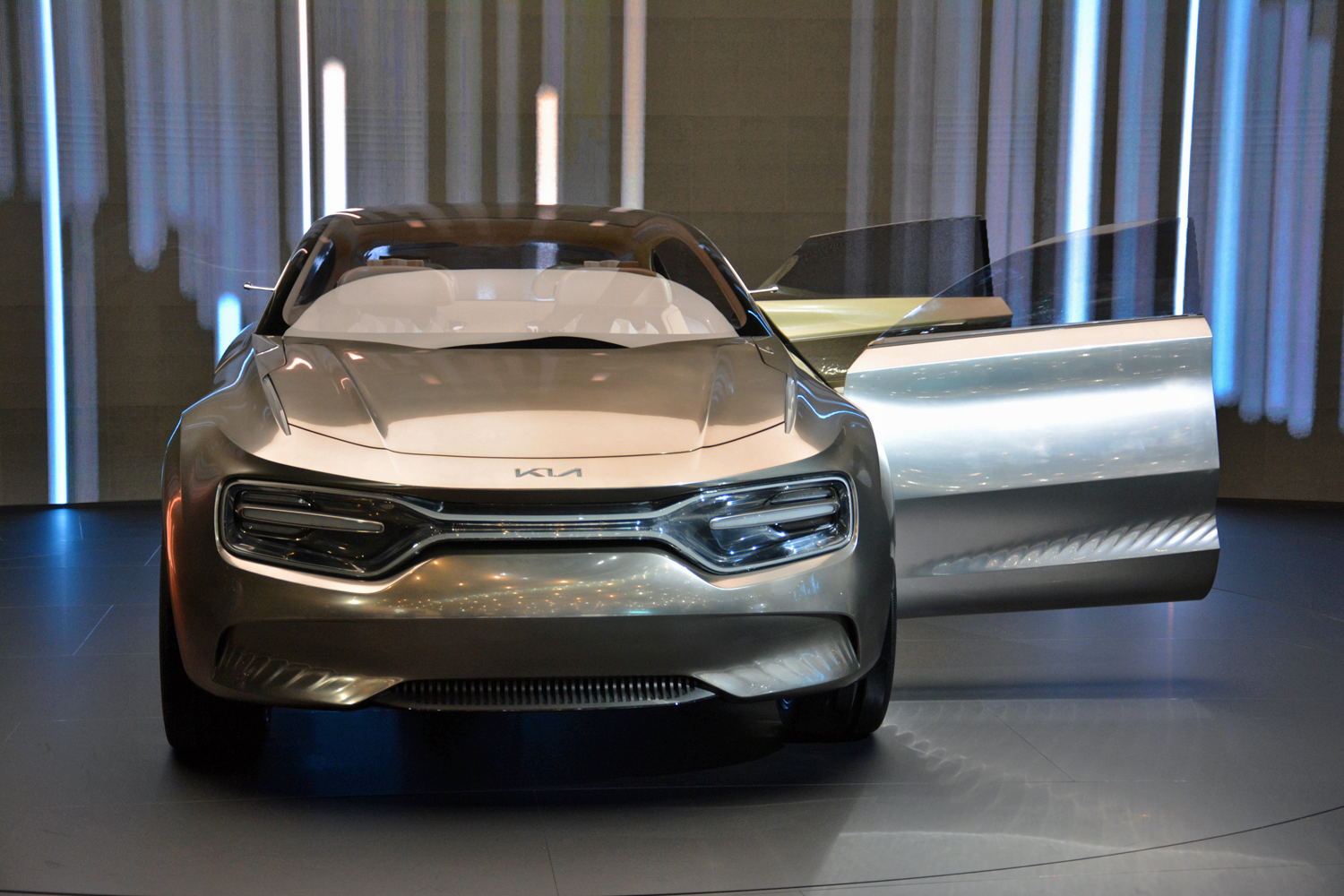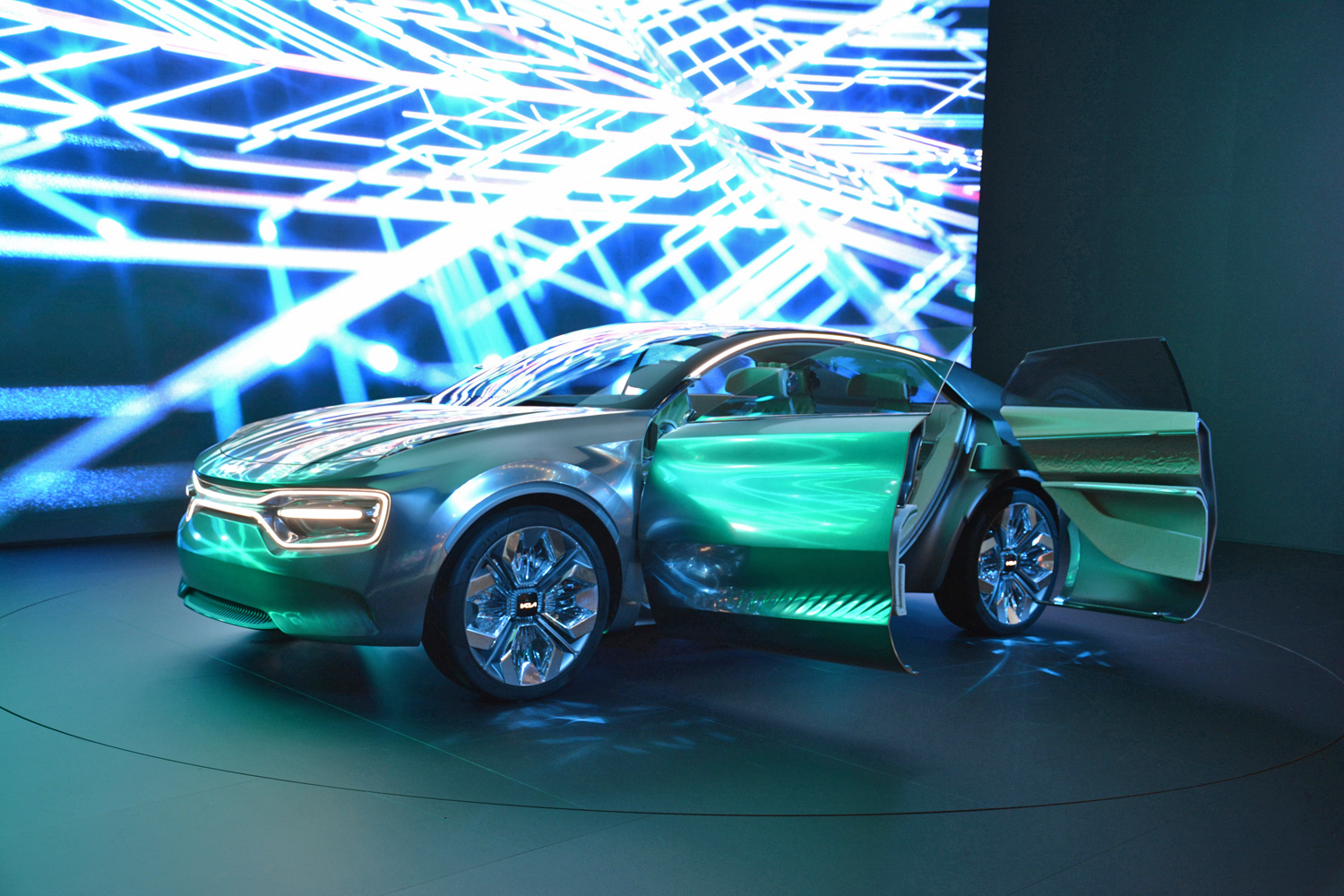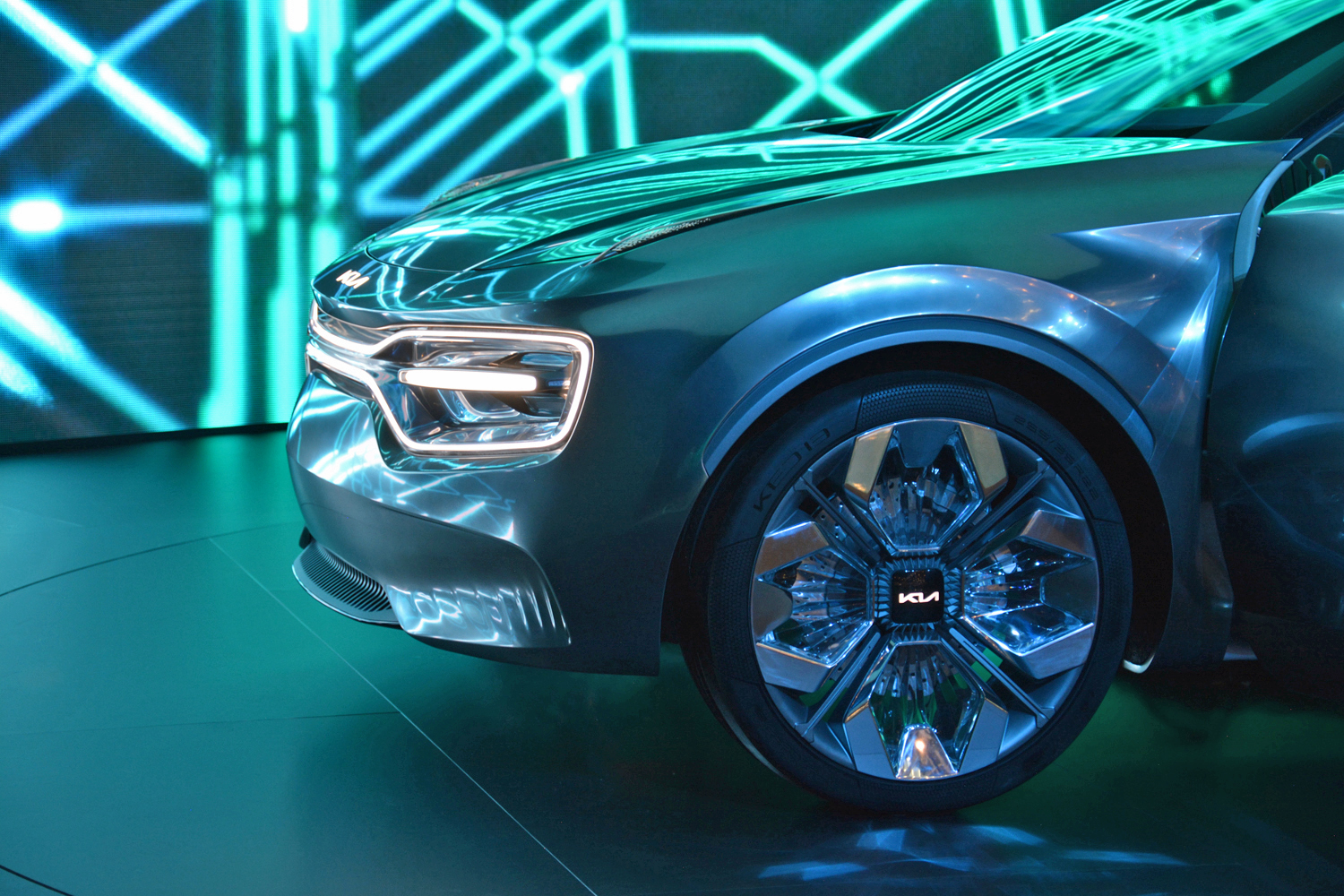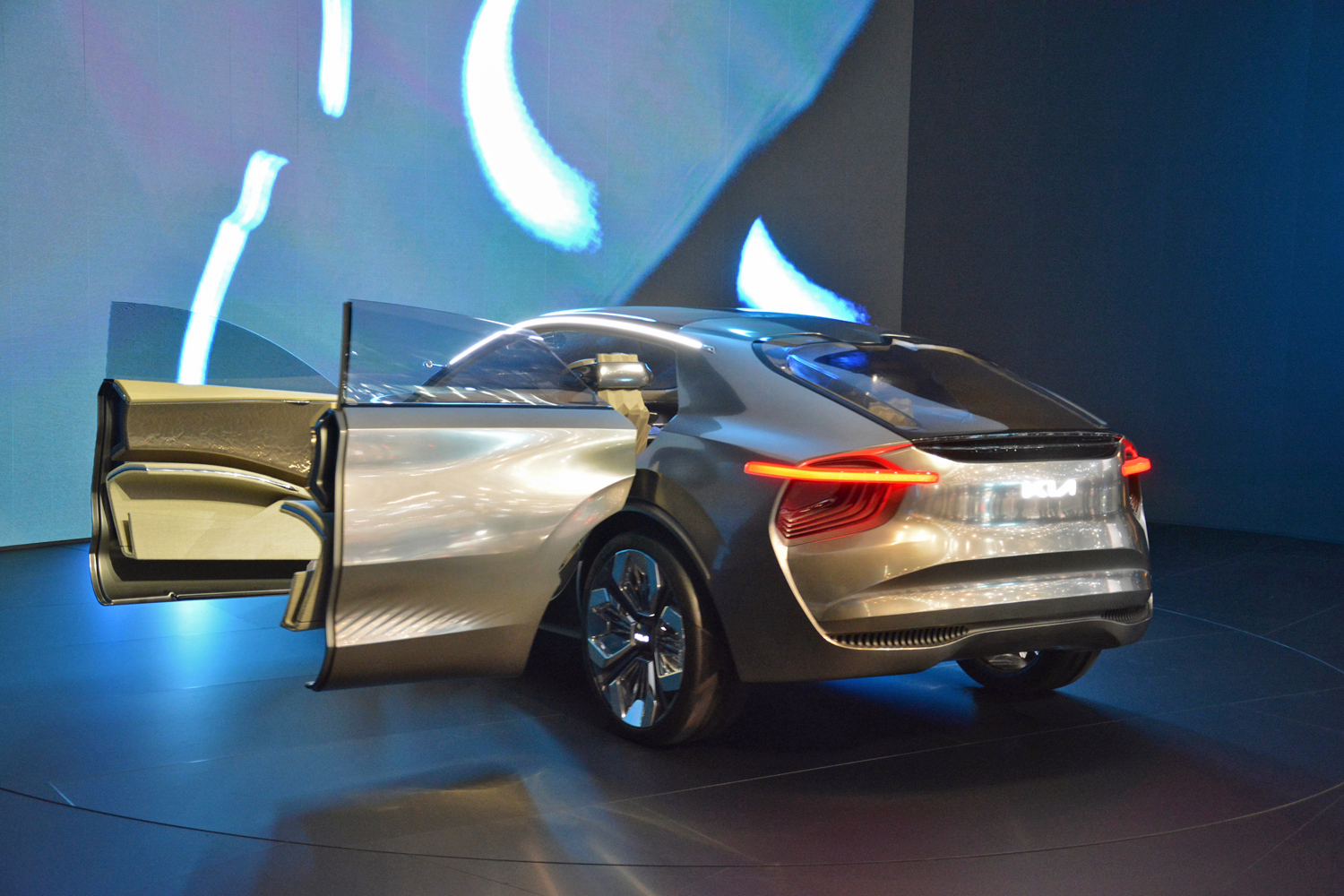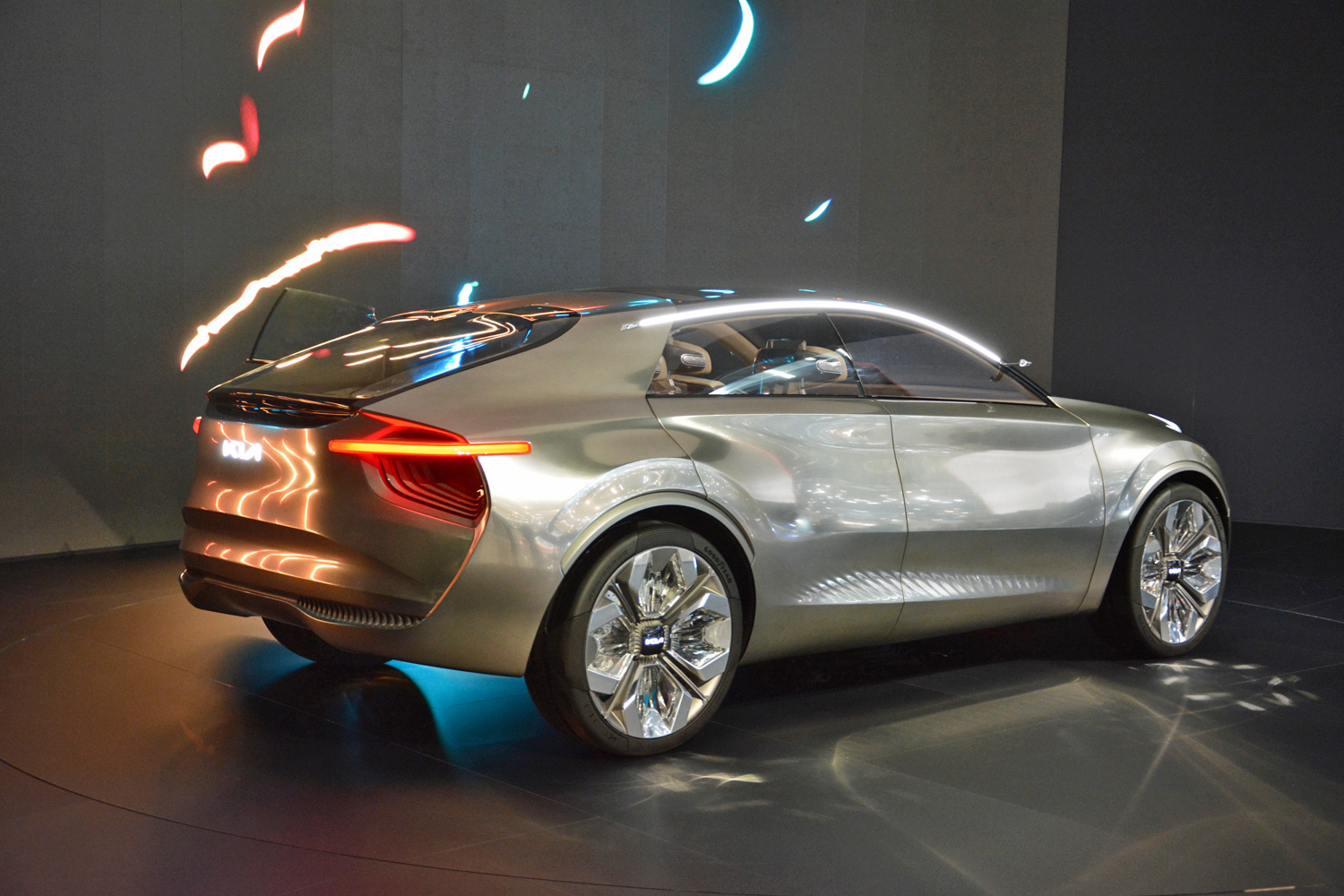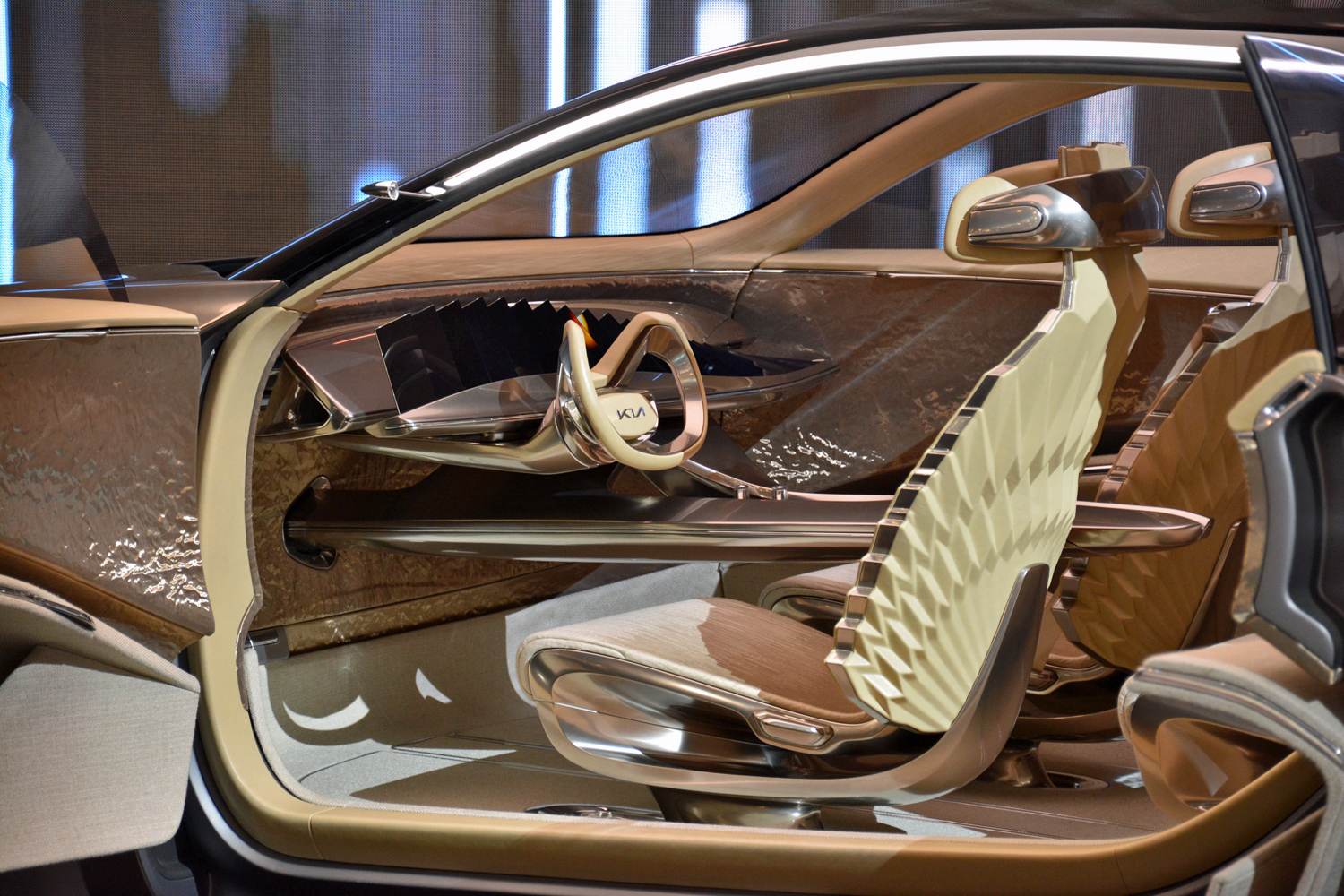Kia is looking to make a splash at the 2019 Geneva Auto Show by unveiling a head-turning electric concept named Imagine. The car surfs some of the biggest waves sweeping across the automotive industry while poking fun at one of the biggest trends in car design.
“Automotive design is about capturing the heart and making it beat that bit faster for that bit longer — and we believe that there’s absolutely no reason why that should change simply because the car is electric,” Gregory Guillaume, the vice president of design for Kia Europe, said in a statement.
The South Korean firm called the Imagine a visual embodiment of its desire to move forward in the exciting world of electrification. Unlike Kia’s existing electric cars, the e-Niro and the e-Soul, the concept is based on a platform developed solely to underpin battery-powered models. It blends SUV, crossover, and sedan styling cues to purposely blur the lines that separate traditional market segments. The end result resembles a tall sedan with a fastback-like roofline, and a bionic stare that sets it apart from other members of the Kia family.
Rear-facing cameras replace the door mirrors, and the design study inaugurates a more stylized version of the Kia logo. It’s backlit, which has become the new norm on the auto show circuit. Designers also gave the Imagine massive, 22-inch alloy wheels, and they crafted the windshield and the panoramic roof from a single piece of glass. It’s as futuristic as its name suggests. The interior is far wilder than the exterior, though.
Kia arranged 21 individual, high-resolution screens onto the dashboard to display information about the car and its surroundings. They replace the single (or, sometimes, double) infotainment screen normally found on a car’s dashboard. Why 21? It’s a joke; Kia calls the feature “a humorous riposte to the industry’s current obsession with ever-increasing dashboard screens.” We think Kia is looking at you, Byton.
In Geneva, the screens showed images of previous Kia concept cars to illustrate how far the company’s design has come in recent years. We wonder where we’d put a phone mount if we had to drive the Imagine from coast to coast.
Kia chose to keep technical specifications under wraps. All we know is that inductive charging technology sends the power cord the way of the carburetor. Similarly, it’s too early to tell what the future holds for Kia’s Imagine concept.
The company promised to launch more electric cars in the coming years, so the design study could accurately preview an upcoming addition to its battery-powered portfolio. However, we’re not ruling out the possibility that it’s a design-led model built only to show the direction stylists will take the brand in. If that’s the case, it will most likely never see the inside of a showroom. One thing is for sure: Don’t expect Kia to approve its 21-screen infotainment system for production anytime soon.
Updated on March 5, 2019: Added full information about the Imagine.
Editors' Recommendations
- Kia makes one of the best car infotainment systems out there. Here’s why it works
- Future Hyundai and Kia electric cars will be able to charge each other
- BMW’s electric Concept i4 has two words for Tesla’s Model 3: Watch out
- Airflow Vision concept previews Chrysler’s quad-screen infotainment system
- Kia’s next electric car, due in 2021, will be a stunner

